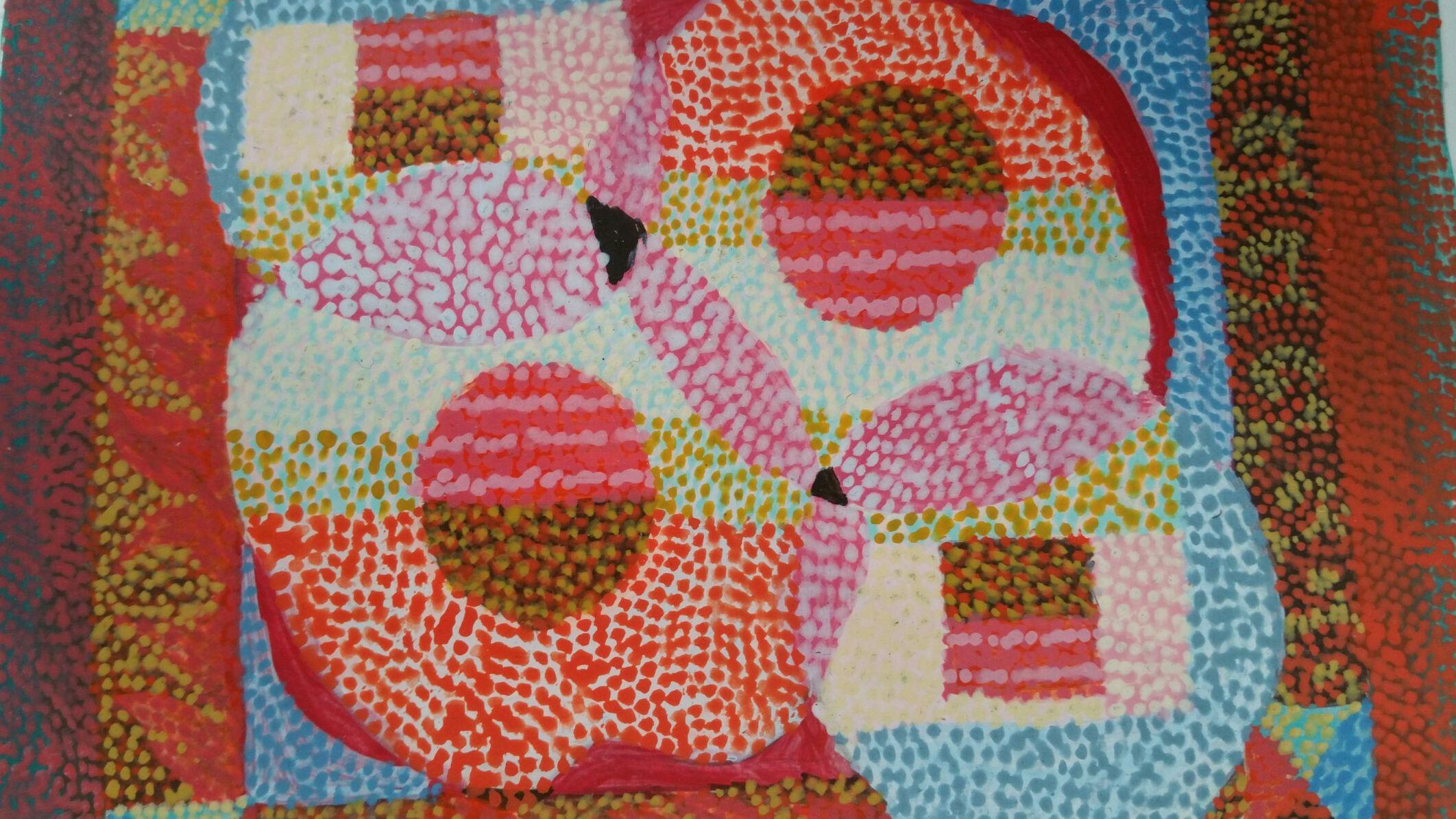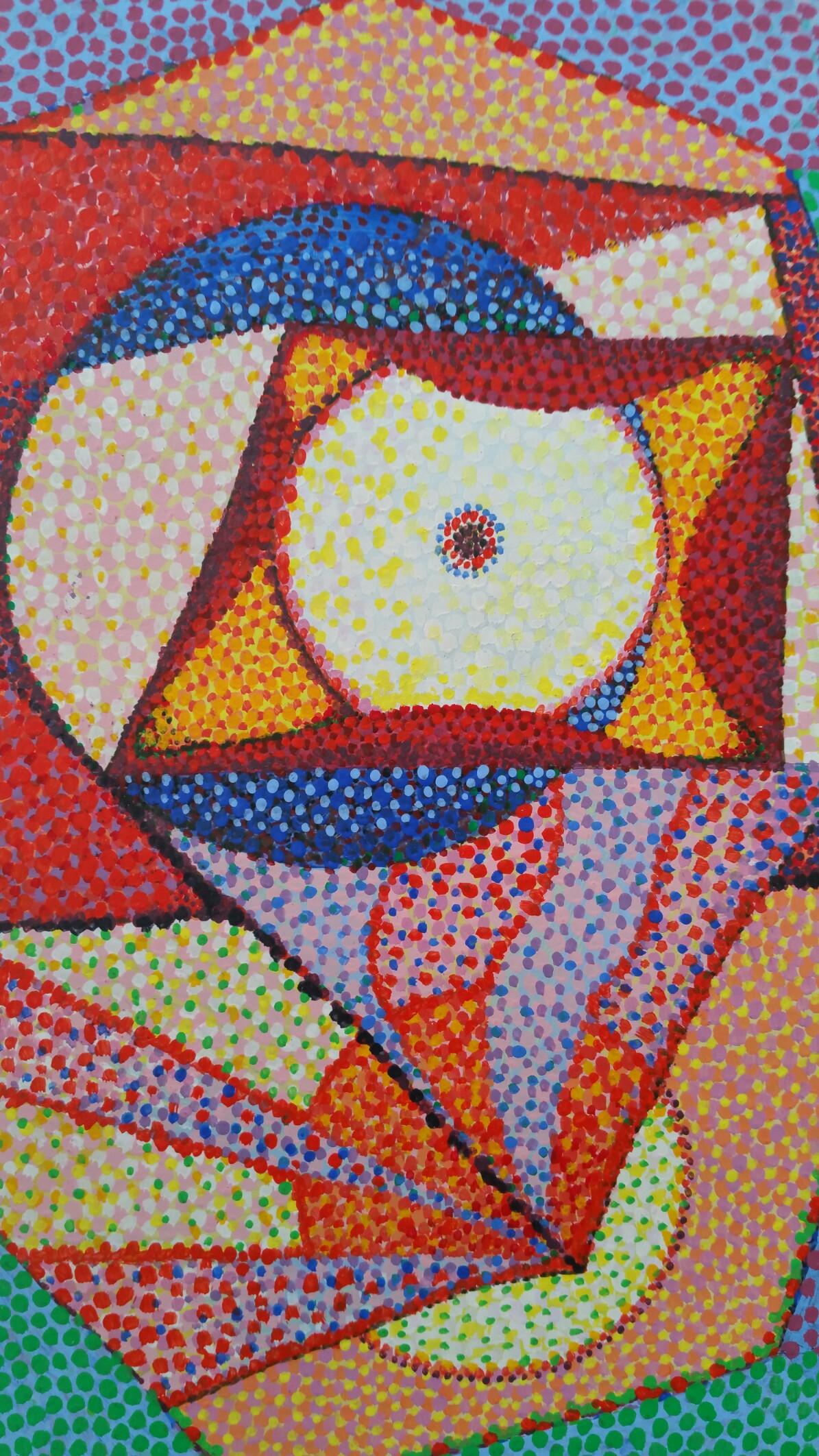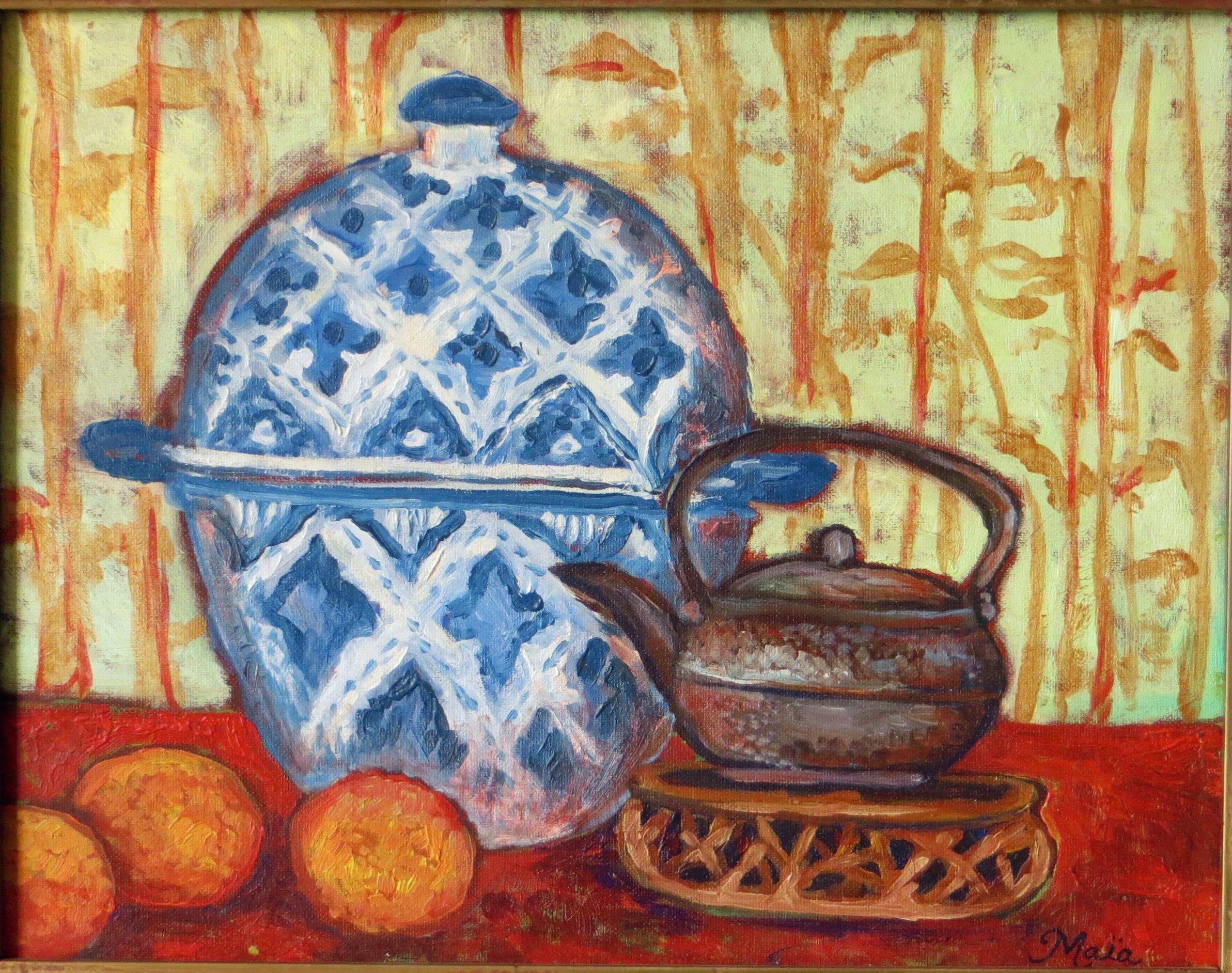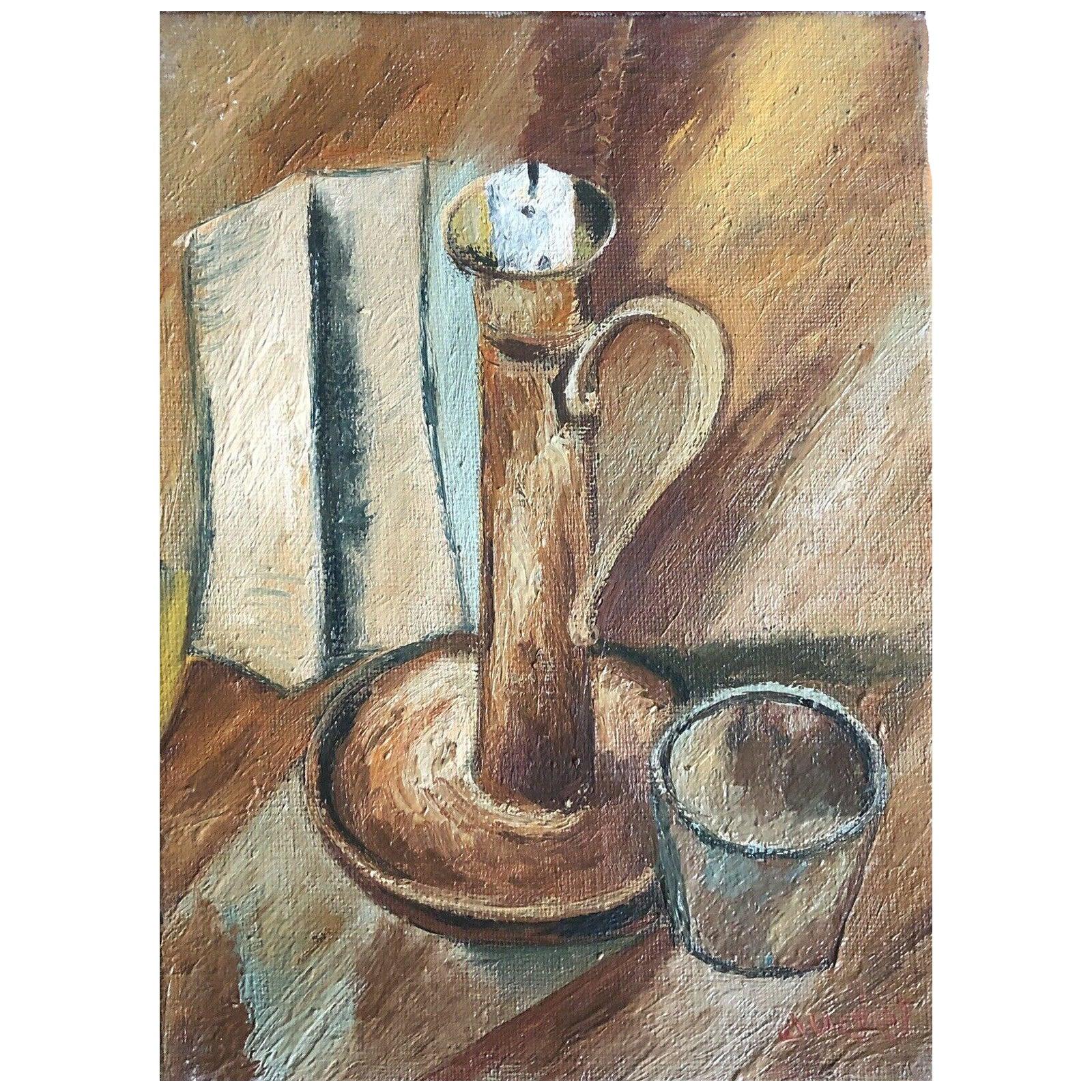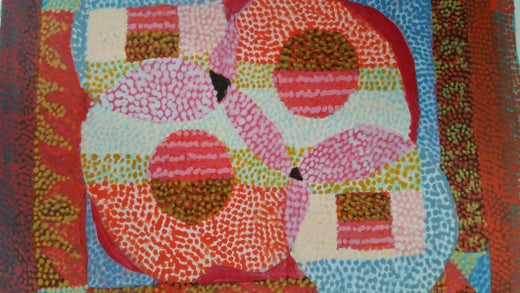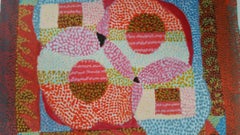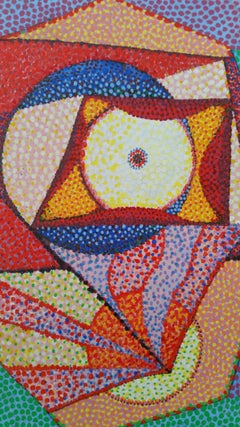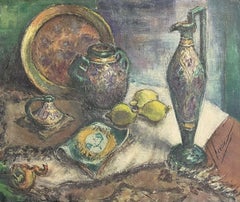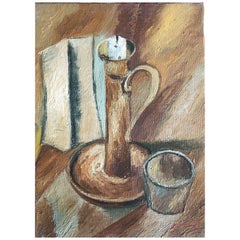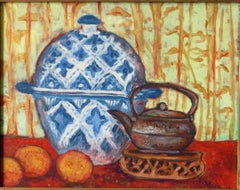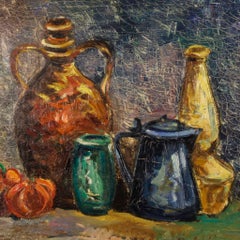Louis BellonFrench Neo-Impressionist Still Life Pointillist Mid 20th Century Paintingc. 1950s
c. 1950s
About the Item
- Creator:Louis Bellon (1908 - 1998, French)
- Creation Year:c. 1950s
- Dimensions:Height: 10 in (25.4 cm)Width: 12.75 in (32.39 cm)
- Medium:
- Movement & Style:
- Period:
- Condition:
- Gallery Location:Cirencester, GB
- Reference Number:1stDibs: LU50935085722
Louis Bellon
Louis Bellon was a pupil of Antoine Chartres. He studied at the National School of Fine Arts of Lyon. His art was deeply influenced from a multitude of sources — André Lhote, the Neo-Impressionism of Georges-Pierre Seurat, the young artists of Les Nabis, the intimism of Pierre Bonnard, the delicate art of Paul Cézanne, the Cubism of Georges Braque and Pablo Picasso, the exciting colors of Henri Matisse, the Orphism (so named by the poet Guillaume Apollinaire) of Robert and Sonia Delaunay. In 1938, Bellon was elected a member of the Salon of the South-East, one of the most prestigious arts organizations of Lyon, where many important contemporary artists exhibited. It was there that Bellon met the Nabis painter Paul Sérusier, allied himself with the Cubist Albert Gleizes, and discovered in the work of Paul Klee, an artistic inspiration similar to his art. Bellon's works are exhibited at the Modern Art Museum in Lyon and in numerous private collections.
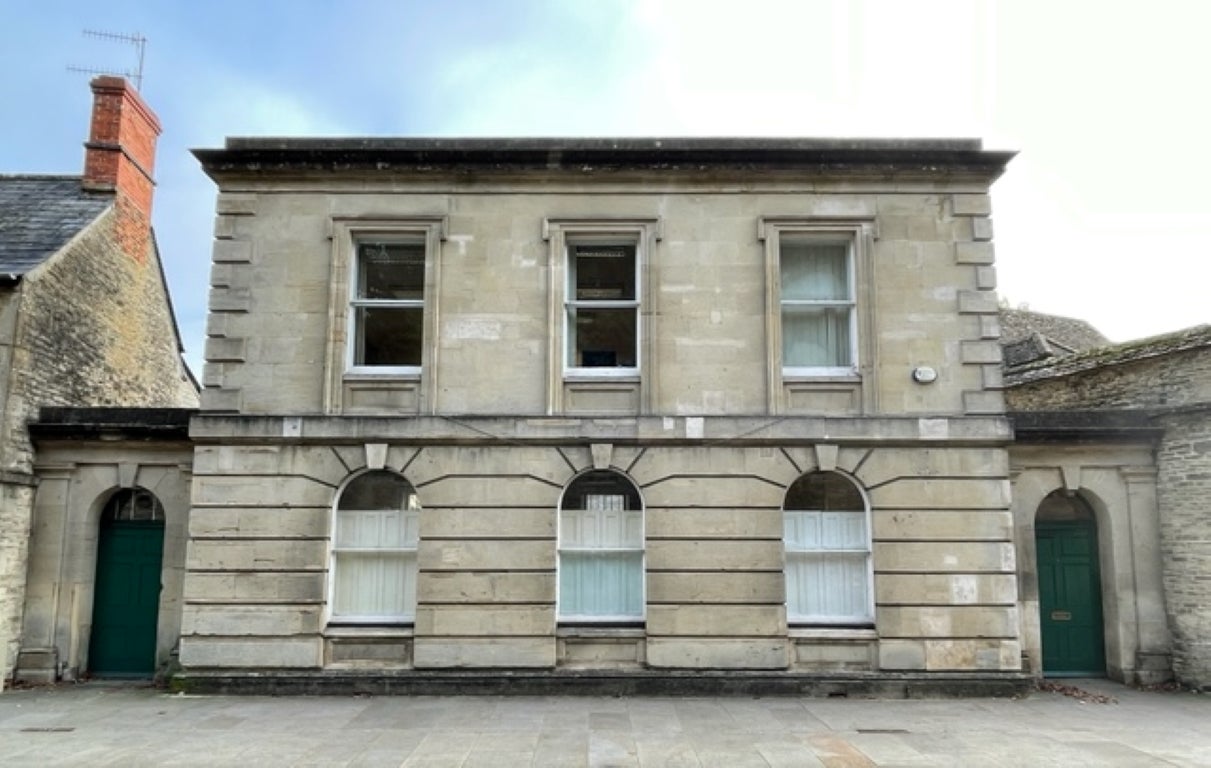
- ShippingRetrieving quote...Shipping from: Cirencester, United Kingdom
- Return Policy
More From This Seller
View AllMid-20th Century Pointillist Abstract Paintings
Watercolor, Gouache
Mid-20th Century Pointillist Abstract Paintings
Watercolor, Gouache
Mid-20th Century Post-Impressionist Interior Paintings
Canvas, Oil
Mid-20th Century Still-life Paintings
Acrylic
Late 20th Century Cubist Abstract Paintings
Oil
Mid-20th Century Impressionist Still-life Paintings
Oil
You May Also Like
Late 20th Century Impressionist Still-life Paintings
Oil
1980s Post-Impressionist Still-life Paintings
Canvas, Oil
Late 20th Century Italian Paintings
Canvas, Wood
Mid-20th Century Impressionist Still-life Paintings
Oil
1970s Post-Impressionist Still-life Paintings
Oil, Canvas
1980s Contemporary Still-life Drawings and Watercolors
Pastel
